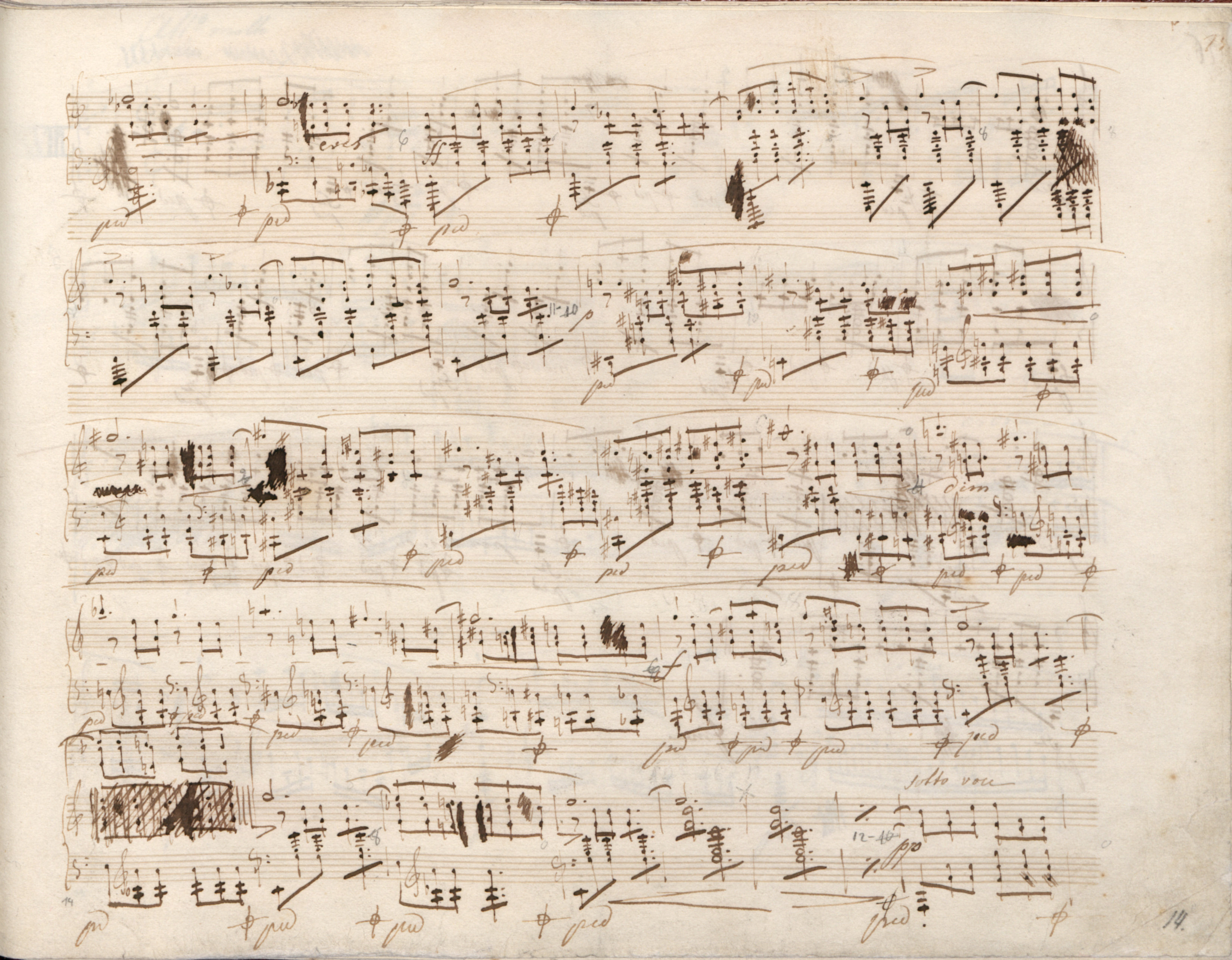



The version of FCI – tied b1 in b. 44-45 and c 2 in b. 48-49 – although eventually abandoned by Chopin, can be, according to us, taken into account as a variant, since it is compliant with the rhythm of the vast majority of the phrases of the Prelude, which, actually, could have been the reason for the change of concept – in this fundamentally contrasting section, Chopin could have considered a slight deviation from the scheme to be favourable. A comparison of the versions of FCI and A in the entire Prelude in similar situations, i.e. where a longer melodic note is followed by a group of quavers (after a dotted minim alternatively preceded by a crotchet), leads to the following conclusions:
2 in b. 48-49 – although eventually abandoned by Chopin, can be, according to us, taken into account as a variant, since it is compliant with the rhythm of the vast majority of the phrases of the Prelude, which, actually, could have been the reason for the change of concept – in this fundamentally contrasting section, Chopin could have considered a slight deviation from the scheme to be favourable. A comparison of the versions of FCI and A in the entire Prelude in similar situations, i.e. where a longer melodic note is followed by a group of quavers (after a dotted minim alternatively preceded by a crotchet), leads to the following conclusions:
- In both versions the first quaver (crotchet) following the long note is most often not played in the R.H. (it is tied or absent) – b. 4-17, 27-30, 38-41, 55, 57-60, 66-79.
- In both versions, however, there are situations in which the respective note is played – b. 23, 35. In particular, one can point out analogous places that differ in this respect – b. 11 and 35, and in the version of A also b. 13 and 37, b. 46 and 50 (bass line), and even 19 and 83.
- In a few places, the versions of the sources differ, which indicates a thorough revision of the piece in this respect – in b. 19-21, 43, 44-45 and 48-49 ties are only in FCI, in b. 46-47 and 80-81 – only in A.
Therefore, a possible double oversight of ties is highly unlikely in these bars.
In addition to EE2, the version with ties appears in the majority of subsequent collective editions, even those that declared that they were based on authentic sources only, e.g. Erste kritisch durchgesehene Gesammtausgabe by Breitkopf & Härtel (volume of Preludes edited by F. Liszt), or were edited by Chopin's pupil, e.g. the edition of Karol Mikuli (Kistner, Leipzig). Both Liszt* and Mikuli (and maybe also the reviser of EE2) could have theoretically had access to a certain source (e.g. FCI, lost autograph that served as its basis or a lost commemorative autograph) or could have known the piece from authentic Chopinesque tradition. However, even if that were the case, it does not change the evaluation of credibility of the notation of A – while preparing the Prelude for printing, Chopin almost certainly wanted to repeat the discussed notes.
* FCI was owned by Clara Schumann, who cooperated with the B & H publishing house as a reviser, e.g. of Chopin's pieces (e.g. Waltzes, Op. 64), and who handed over the manuscript to Brahms, co-editor of the aforementioned Erste ... Gesammtausgabe. Therefore, it was FCI that Liszt could have known.
Compare the passage in the sources »
category imprint: Differences between sources; Corrections & alterations
issues: EE revisions
notation: Rhythm

